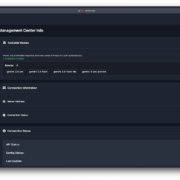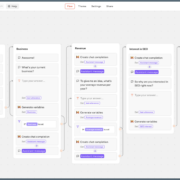The telecommunication industry is becoming digitized and interconnected, but the risk of cyber threats is also growing. With sensitive customer data, digital infrastructure, and regulatory pressures mounting, telecom companies must learn to keep cybersecurity measures at the forefront of everything, especially when it comes to external third-party partnerships. Vendor risk management software is considered essential for maintaining a secure business infrastructure in high-risk environments.
In this article, we will explore why telecom companies need advanced security systems, the collaboration between security and compliance, and how advanced tools contribute to cybersecurity strategies.
The Cyber Risk Landscape in Telecom
Telecommunications companies are seen as prime targets for cyberattacks. According to the Cybersecurity and Infrastructure Security Agency (CISA), this sector is now considered a concern due to its high levels of national security risk. From denial-of-service (DDoS) attacks to ransomware threats, telecom firms must navigate across different vulnerabilities.
One particular challenge which is growing is known as reliance on third-party vendors. Whether it’s a deadline with network hardware suppliers or service providers, telecom companies can operate with complex supply chains. Working with external partners involves potential cyberattacks.
This is where vendor risk management software comes into play. By monitoring and assessing the current security postures of third-party vendors, these tools allow telecom firms to identify and mitigate potential risks from third-party vendors.
Why Telecom Companies Need Vendor Risk Management Software
Telecom companies work with thousands of vendors internationally. Managing these relationships manually can sometimes be prone to errors. Vendor risk management software offers automation, visibility and scalability to secure these interactions.
Here are some key capabilities this software includes:
- Automated security assessments to help evaluate vendor controls
- Continuous monitoring to see real-time alerts regarding vendor risks
- Customizable questionnaires that align with ISO 27001, GDPR and NIST
- Risk scoring and reporting to ensure businesses can make informed, data-driven decisions.
By using these advanced tools, telecommunication providers can help businesses stay protected against potential threats and be aware of specific safety features. Businesses can use advanced software to offer effective third-party risk strategies and ensure third-party vendors are evaluated.
Real-World Telecom Threats from Third Parties
High-profile security incidents have shown the vulnerabilities within telecom supply chains. For example, the SolarWinds attack affected numerous telecom and technology companies worldwide. This breach highlights how a single incident can impact an entire industry and tarnish a business’s reputation.
Many other cases, such as the exposure of customer call records, underscore the importance of secure vendor analysis. While telecom companies operate in a sensitive network, even small gaps within systems can lead to dangerous outcomes and business damage.
To help prevent these issues, it’s essential for businesses to utilise vendor risk management software with ongoing monitoring and assessments to ensure that vendors’ cybersecurity postures are secure.
Internal Collaboration and Regulatory Compliance
Telecoms also can face compliance issues if they do not follow the correct regulations, such as GDPR, data protection laws and the FCC’s cybersecurity rules. Vendor risk management software helps to support compliance regulations by generating audit documentation and ensuring all vendors meet these standards.
In addition, the responsibility for vendor risks relies on different departments such as legal, security and IT. Having an effective management platform can ensure all security assessments are conducted and help to keep business operations secure.
Integration with Broader Cybersecurity Strategy
Vendor risk management isn’t only a one-time function. This system should be integrated as a standard cybersecurity framework that encompasses all systems, from endpoint protection to incident response.
By incorporating vendor data into security information and event management (SIEM) systems of governance, risk and compliance (GRC) platforms, telecom firms can ensure they are protected within the threat landscape.
Conclusion
The telecom sector is now increasingly intertwined with external vendors, and it is critical to understand the need for structured third-party risk management tools. With cyberattacks on the rise, the weakest link in the supply chain can compromise the entire business system and put it at risk.
The right vendor risk management software can support telecom businesses in assessing, monitoring, and reducing risks from occurring. By implementing effective vendor oversight, companies can protect themselves from threats and reputational damages and also align with regulatory demands and customer expectations.
The stakes are higher now, and investing in the right vendor risk strategy can ensure that businesses stay protected and can work with partnerships internationally safely and securely.









